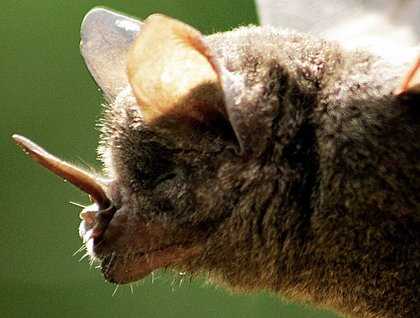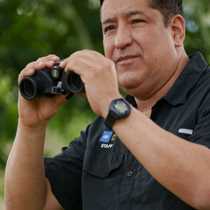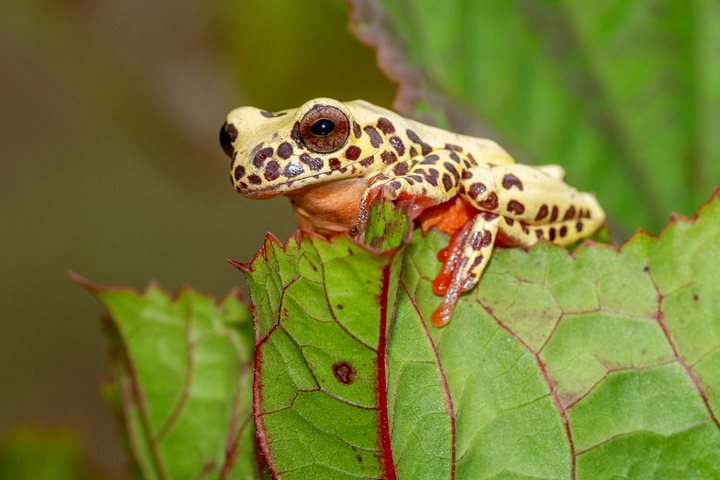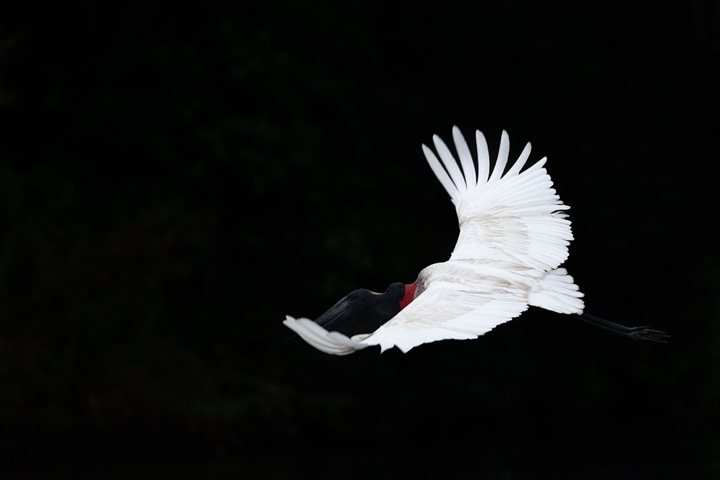The first full day of our expedition on the Upper Amazon in Peru was filled with adventure and excitement. We started early in the morning with a skiff ride along one of the main tributaries of the Amazon River, the Marañon River. Our home away from home this week, the Delfin II, was “tied up” since last night after a short navigation of approximately seven miles from Nauta town, close to a place known locally as “Casual.” We explored the area at a low speed with our fleet of skiffs looking for wildlife. All three skiffs found ways to enter in smaller streams that allowed us to spot several bird species including, Chestnut-bellied seedeaters, Oriole blackbirds, flycatchers and Greater anis.
After breakfast we went out once again but this time to explore Casual by walking on “Terra firme,” a term used to describe areas that never get flooded. We had two choices, a long walk and shorter version. In both options we had the joy to spot several plant species and listen to our expert Delfin II naturalists explaining some fascinating aspects of the ecology of the rainforests. Several animal species were seen: tarantulas, bats, some frog species including one of the most beautiful and spectacularly colored frog species found in the Amazon the Poison Dart frogs. The latter are not only beautiful but have a remarkable natural history as well. They have alkaloid skin secretions that give them their common name. Traditionally many indigenous people use these powerful toxins all over the Amazon region to coat hunting darts and arrows. The toxicity of the secretions is determined by the frogs´ diet that consists mainly on some species of ants that they prefer to eat. The chosen ants contain high concentrations of formic acid. In captive conditions when these frogs are fed with other kind of insects they lose the toxicity. The long walkers reached a giant strangle fig that was used for group pictures. The tree has many long and strong lianas. Some of us had the thrill to use a liana to swing some feet above the ground. After these activities, once onboard, we had a couple of introductory talks, one on the Amazon and one on the Pacaya-Samiria Reserve. After lunch we had the joy to observe many pink river dolphins from the ship lounge.
In the afternoon, we went to explore the Pucate and Yanayacu Rivers. As this area is an important point to go inside the Pacaya Samiria Reserve, there is a Rangers´ Station at the entrance. We spent the whole late afternoon riding the skiffs with a great weather, it was very calm, there were lots of birds flying and calling. We spotted a couple of monkey troops and many bird species including toucans and parrots.
We had a very rare and special sighting this afternoon! A harpy eagle (harpia harpyja) was spotted sitting quietly on top of a branch high up on top a tree. This bird species is the most powerful bird of prey in the Neotropics. It is a large and bulky eagle that can reach up to 40 inches in length and a wingspan of 80 inches! Harpy eagles feed mainly on large mammals that trap with their powerful and thick tarsi and toes to then devour with their heavy and sharp bills. The trademark in this iconic creature is its long bifurcated crest that gives them a rather imposing appearance.
What a day! At the moment I am writing these paragraphs I do in fact feel a little tired but with the enormous satisfaction of having had a wonderful and memorable day.







